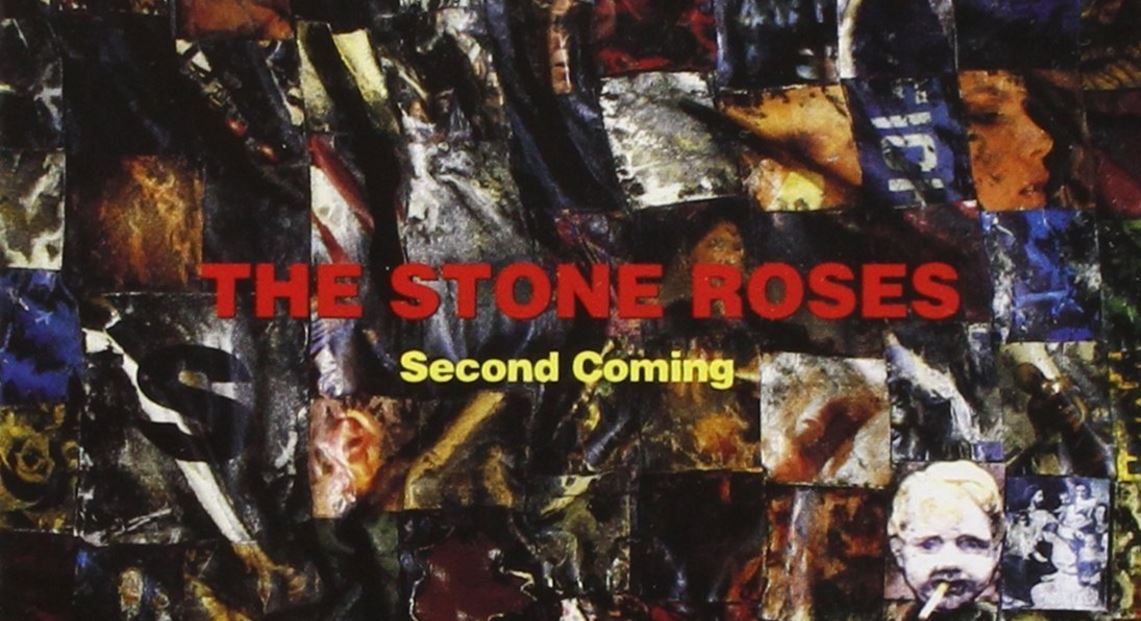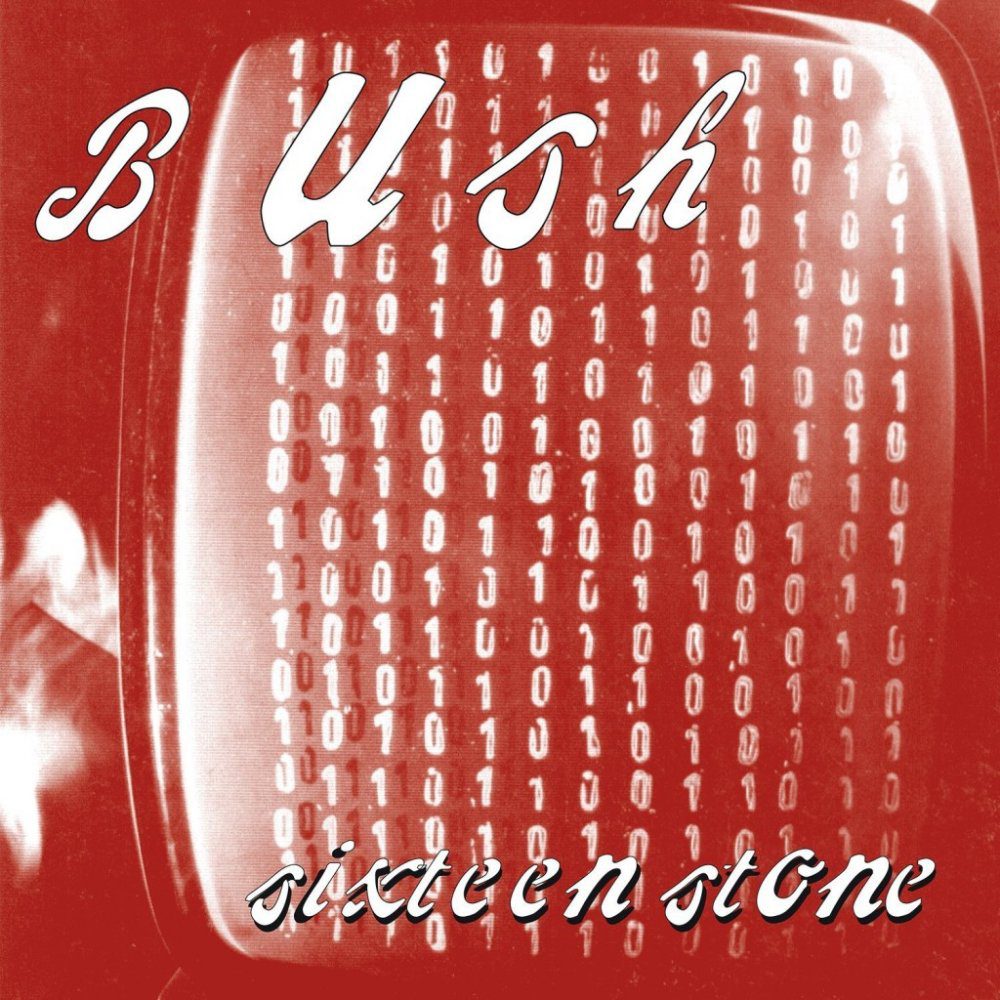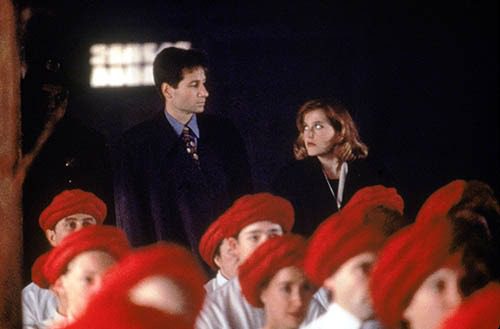PopCulture25YL looks back at the music, shows, comics, books and whatever else we want from the month that was November of 1994 to explore why they’re still relevant to us 25 years later. This week brings us The X-Files’ “Red Museum”, Pearl Jam’s Vitalogy, the Stone Roses’ Second Coming, and Bush’s Sixteen Stone.
VHS In The VCR
The X-Files- S2E10 “Red Museum” by John Bernardy
What started out as a culture battle in small town cattle country of Wisconsin—between the town slaughterhouse and a cult-like vegetarian church known as the Red Museum that campaigns for the ethical treatment of animals—turned on a dime into the X-Files alien mythology about two thirds of the way through the episode. I believe the writers wanted to show what happens to a town when it’s roped into secretive government testing of alien DNA on the town’s children, but what ends up happening is the battle we were expecting to witness between the slaughterhouse camp and the red turban camp never comes to pass. And it wasn’t the townsfolk’s own agency that heightened tensions anyway; it was the experiment causing a rift in the town. And the Red Museum only moved in to be a control group for the experiment—though it’s not proven whether by government design or lucky happenstance.
But we don’t know any of this at first, or even by the middle. All we know is a boy leaves his house, and disappears until the next morning when he shows up in the woods only in his underwear and magic marker on his back spelling “He is one”. Then we’re introduced to the mean kid of the local sheriff, and a creepy cult-like church. Seems like it’ll be a mind control episode where the Red Museum is trying to liberate the local livestock from their fates. All this seems more and more plausible the more kids end up in the woods with “(s)he is one” on their backs.
It’s tricky. The episode is ambitious for all it tries to take on—including bringing back Crew Cut Man—but it’s so late when Mulder and Scully tie the plot to the same Purity Control substance from “The Erlenmeyer Flask” that I kept asking myself whether or not this was going to be the episode with “they’re injecting kids with alien DNA.” And I didn’t figure it out until one of the locals show Mulder and Scully the guys who inject the cows with growth hormone. Add to that the following scene is a non-sequitur plane trip where a pilot and a doctor with a briefcase are in a plane crash that explodes somewhere—that turns out to be the same town. It didn’t seem like part of the same episode at all, yet here it was. And Mulder and Scully’s lucky break comes from finding the briefcase with the material that matches the alien DNA that Deep Throat died for, at the hands of Crew Cut Man who arrives after the crash to similarly cover over the experiment’s tracks. Mulder and Scully did not solve the case with fancy investigating skills. It was literally bankshot information from a plane explosion.
Another odd inclusion is how one of the cow injector men, Gurd Thomas, was a peeping Tom in a hidden room inside the home of the first missing boy who Mulder and Scully initially arrived to investigate. Not sure why, in an episode where there was already a cult, you’d include a depraved character like that. Thomas was already in league with Doctor Lawson, who was that doctor in the plane crash. Lawson was injecting the town kids with the same alien DNA he was injecting into the cows. Why the extra level of hidden room secrets in the walls when there’s already so many secrets under the surface? Plus, when he says he kidnapped the kids “because of what they’ve become; they’re all monsters”, it just seems like a pot calling a kettle black.
No matter how striking the red turbans and white robes are, this episode isn’t about the Red Museum at all. They’re right: the rest of the town is monsters, but they’re only plot misdirection. The town may eat meat that’s turning them into monsters, but it’s the injections that took away the town’s agency in the matter. I guess the moral of the story is don’t trust the government or genetically manipulated food. Or shots doctors give you. Or, there is no moral, and the writers wanted to write a story about a town with as many secrets as Twin Peaks and then blindside us with connections back to Deep Throat.
The only time the original town story collided with the back third’s conspiracy story is when it takes a path to the truth from us. Once the town woke up to what was happening, it fought back against the experimenters. This is exemplified when the sheriff killed Crew Cut Man. Never mind that Mulder and Scully caught Deep Throat’s killer fair and square, and that they’re about to interrogate him and get closer to the root of the conspiracy. Crew Cut Man killed the sheriff’s kid that morning, and the sheriff’s anger and grief won that battle with a number of bullets.
While the final scene lingered on Crew Cut Man’s body, Scully’s voiceover summarized what I started this segment with, telling rather than showing at quite the fast-paced clip. What resulted in my memory is an episode where I loved learning the outcome of the kids being tested, but couldn’t remember the plot at all.
CDs On Rotation In Our Six-Disc
Pearl Jam – Vitalogy by Paul Billington

The early ‘90s had seen the cementing of grunge as a distinct category of music, but then as Britpop began to fully emerge it seemed to fade out of the mainstream consciousness, almost as soon as it had arrived. Unfortunately, the premature death of Kurt Cobain possibly represented the culmination of interest from the general public, and the knowledge that Nirvana (alt-rock torchbearers for many not in the know) would no longer be at the forefront meant that there was little for mass media to latch onto aside from the now-obligatory drugs, angst and apathy angles for what they deemed less-noticeable Generation X bands. Within the melodrama of what would now been seen as click bait, at the end of 1994 came the latest offering from the other grunge group of note*—Pearl Jam’s aggressive and eclectic third album Vitalogy.
If grunge music “has a dirty guitar sound, strong riffs, and heavy drumming“, then Vitalogy hits those notes but a whole heap more. It’s unafraid of power-driving a message home (“Spin The Black Circle”), throwing out non-standard, twisted balladeering (“Nothingman” and “Better Man”) and the unexpectedly experimental (“Bugs”, “Aye Davanita” and “Hey Foxymophandlemama, That’s Me”). Lyrically, it’s one of the strongest and strangest from their oeuvre. Following their incredible initial success, related lines like “p-r-i-v-a-c-y is priceless to me” must surely be an acknowledgement of the invasive attention that they (and their “competitors” Nirvana) had gained; and then we have:
“oh, where did they come from? stormed my room!
and you dare say it belongs to you…to you…
this is not for you
this is not for you
this is not for you,”
…which almost mirrors “In Bloom’s”
“He’s the one
Who likes all our pretty songs
And he likes to sing along
And he likes to shoot his gun
But he knows not what it means
Knows not what it means”
…for the seeming commentary on fair-weather fans who follow—but don’t truly understand—the core of the band’s feelings and philosophy.
With a song like “Tremor Christ”, I can almost hear it as an alternate position to the one Kurt Cobain may have believed when he took his own life:
“the smallest oceans still get…big, big waves…
I’ll decide…take the dive…
take my time…not my life…
wait for signs…believe in lies…
to get by…it’s divine…whoa…
oh, you know what it’s like…
turns the bow back, tows and…drops the line…
puts his faith in love and tremor christ…”
As always, lyrics from Pearl Jam can be interpreted many ways, and the album produces lots to ruminate on aside from the hook of a great riff. There’s much to love and be challenged by on this disc—which was packaged like a book, resembling an old medical publication also called Vitalogy—reflecting on life, health and death. Mixed amongst the pictures and diagrams are lyrics, poems and original excerpts from the tome, creating an interactive experience seldom seen in releases at that time. It would appear that the band was seeking to express themselves in a fashion that distanced them from the pigeon hole they had been placed into.
Pearl Jam were punching at their own weight with their first two releases—Ten and Vs. Vitalogy could be seen as an attempt to ignore expectations and to climb outside the ring. On that basis, it almost succeeds and, for me, still remains the last of their albums (Ok, maybe Yield aside) that I truly love.
*not in my world – but the world’s mainstream media in general.
The Stone Roses – Second Coming by Abbie Sears

I don’t want to tell you that The Stone Roses’ Second Coming was the best thing to come out of 1994, I want to tell you that it was the best thing to come out of the ‘90s in general!
The Stone Roses are my favourite band. And Stone Roses fans are passionate and intense about their favourite band. When the announcement for Second Coming came about in 1994, fans were quite desperate. They spent their days listening to The Stone Roses’ first album entitled The Stone Roses. That first album is the greatest first album to ever seemingly come from nowhere. It was unexpected brilliance, it was magical guitar, light and loose melody and floating lyrics with the coolest vocals. Since its release in 1989, those who discovered it searched everywhere they could and scoured through every rock magazine to learn more about this new band.
The Stone Roses had performed live but not since 1990. Four years went by without word from them, only talk and rumours. In 1992 Turns Into Stone bought some B-sides to songs from the first album, but it wasn’t clear if new content was on the horizon. Luckily, The Stone Roses album was packed with new feelings to dig into. That’s a lot of their music in that first album. How it makes you feel is a huge part of the appeal. So when it was announced back in 1994 that this December was the month of the Second Coming it was the most highly anticipated event of a lifetime. What the hell were they going to come back with? I view the announcement as a gift from the Gods. On the 5th of December, the long-awaited album finally dropped and I think that Second Coming was a much harder version of perfect Roses style. Not as floaty as their first album, a lot more rock. All apart from “Ten Storey Love Song”, in my opinion, which seems like it could come right out of The Stone Roses. I think that’s why myself and a lot of other fans are so attached to that particular song, because after the wait, that melody was what felt like we were hearing the Roses actually return to us.
I didn’t get to see The Stone Roses live until their reunion at Etihad Stadium, Manchester in 2016. I’ve been to my fair share of incredible concerts and this was the most surreal experience. I’ll always remember taking the coach to Manchester and everyone was on that coach for the same reason. The entire coach burst into singing “Ten Storey Love Song”, even singing along to the instrumental parts. The Stone Roses music is limited but genius and you can’t help but listen to it over and over so you come to know it note to note. Second Coming was the second and the last official album from the band, which means we’ve had a hell of a long time to memorise it. As with the first album, Second Coming is genius with the first listen and as you continue you’ll discover all its secrets.
To this day, The Stone Roses remain one of the most mysterious bands on the planet. After their live shows in 1996, the band disappeared from the stage again until the first reunion 2012. Their mystery is portrayed in the tunes too; it’s part of the reason we love to dig into their stuff. I thank the heavens for Second Coming and that we were able to witness a darker, cooler side to The Stone Roses.
Bush- Sixteen Stone Dave Rafalko

The grunge era of hard rock music was an intriguing phase and one of varied sounds and influences, to say the least. While many were rather overlooked or obscured by stuff like say the collective works of Seattle bigtimers such as Nirvana or Alice In Chains, there were some other heavy hitters out there—much like today’s topic of discussion—that competed with those big cheese grunge giants. Bush, while technically classified as “post-grunge” and not having origins in or around Seattle, Washington, is one London, UK-based outfit that attempted to follow up and emulate the early ‘90s somber music craze. Fronted by vocalist and rhythm guitar player Gavin Rossdale, the band exploded around the mid ‘90s with hits like “Glycerine“, “Comedown“, “Little Things” and “Machinehead“, all of which were singles off of the album Sixteen Stone.
Released on December 6th, 1994, this mellow yet catchy debut full-length by the British rock stars created quite a frenzy around the time of its release. It was released and re-released a few times by the band’s two record labels Trauma Records (original) and Interscope Records. Over time, the record sold over six million copies worldwide, got 6x certified platinum through RIAA (Recording Industry Association of America), and even once peaked at #4 on the Billboard 200 charts. Sixteen Stone received great praise and positive reception despite some critics saying it alludes too much to the likes of the Seattle musician crowd and remains a huge influence as well as the band’s most successful release to date.
Getting to the music at hand, the album sets off on a rather cosmic-sized journey with “Everything Zen“, their first hit. The real life issues mirrored in the lyrics really give off a somber, almost emo-esque tone, as most grunge would do. The riffs aren’t much to write home about—some power chord strumming and bends here and there. But, the thing is, everything fits so well and the production quality is superb for the time. There are greater builds and faster tempos in the choruses, which juxtapose with the slower, downbeat verses. This song is basically a retelling of one’s life through various quotes and references to other songs by David Bowie, Jane’s Addiction and such. “There’s no sex in the violence” really is a memorable bridge/interlude tagline, I might also add.
There are a few other songs really worth talking about in-depth such as “Little Things”: a more fast-paced song with an intro riff eerily similar to the one in Nirvana’s “Smells Like Teen Spirit“. The structure has that old school verse-chorus-bridge type and the song itself centers mainly around the concept of paranoia and how the lead singer deals with it. “Comedown” is yet another banger in its own right and definitely my personal fave because of the emotion in the chorus and feelings of struggle listeners can perceive. The bass riff is similar, but extremely fun to listen to and the flow is catchy until the guitar solo, which is kind of a mess but it leads to a really melancholy ending for the song. “Glycerine” is easily one of the band’s softest and saddest tracks to boot with its simplistic, slow-moving guitar, low, almost whispered vocals, and who could forget about those orchestral violin/cello/whatever-they-are instruments towards the outro. “Machinehead” is another personal fave due to its uniquely aggressive undertones and octave main riff in addition to the underwater vocal effects.
All the other songs not mentioned have their moments, too. A little solo here and a catchy chorus there. The last couple of tracks aren’t much, with the last being a short filler. However, I also gotta give it to whomever designed the cover artwork for this one…I have no clue what the hell I’m looking at exactly to this day, but it looks cool regardless. This one also was re-released all with original recordings, considering the frontman didn’t want to re-record them, considering the original sounds “classic”, and rightfully so. The title is in reference to an incident that happened to a close friend of the band and the album itself is also dedicated in remembrance of two other close friends who sadly passed away in a boating accident on the Thames River.
All in all, I highly recommend checking this one out for yourself if you haven’t already. It’s a lighthearted and hard-hitting piece of grunge rock history that deserves all the recognition it gets, despite many of the clearly borrowed Seattle, WA influences being all too familiar many a times. I’d have to rate this one a solid 9/10.



